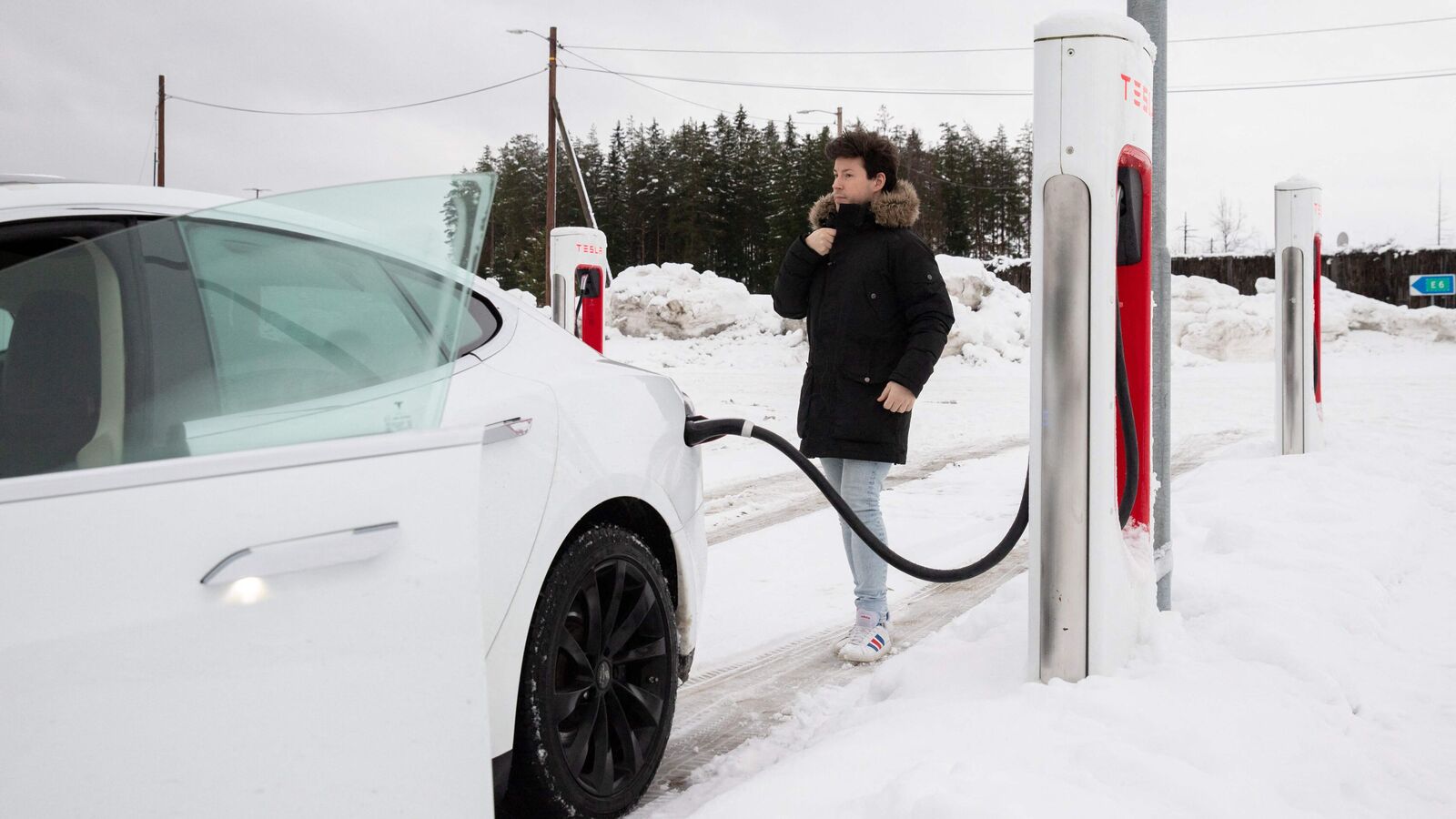Tesla owner Philip Benassi has lived through cold winter days, but like other Norwegians, he has learned to deal with them.
With temperatures frequently dropping below zero, rugged terrain and long remote roads, Norway might not seem like the most ideal place to drive an electric car, which drains its battery faster in cold weather.
However, when it comes to zero-emission vehicles, the country is the undisputed world champion.
Four out of five new cars sold in Norway last year were electric, and the major oil producer aims to end sales of new fossil fuel cars by 2025 – a decade ahead of the EU’s planned ban.
Benassi tried it in 2018.
The 38-year-old cosmetics company salesman drives 20,000 to 25,000 kilometers (12,400 to 15,500 miles) a year in his gleaming white Tesla S.
Like most new EV owners, he panicked at first when he saw the battery drain rapidly, possibly dropping to zero on a deserted country road.
“I don’t know much about the car. But after all these years, I have a good idea of how many kilowatts it takes, and I know it makes a big difference depending on whether the car is left overnight in the open air or in a garage,” he told AFP.
When the car is parked outside, where temperatures can reach minus 15 degrees Celsius (5 degrees Fahrenheit), it drains more of the battery, Benassi said.
“It will take a long time to return to normal consumption,” he added.
How much range an electric car loses in cold weather depends on the model and how cold it is.
“However, the following rule of thumb applies: frosts of around -10°C will reduce the operating range by about a third compared to summer weather, while severe frosts (-20°C or higher) can cut them by up to half,” says the Finnish consultant Vesa Linja said – ah ho.
“This can be mitigated to some extent by storing the car in a warm garage,” he added.
charging station
Drivers have to plan their route ahead of a long journey, but car apps and Norway’s vast network of more than 5,600 fast and ultra-fast charging stations help make the process easier.
EVs accounted for 54 percent of new car registrations last year in Norway’s Arctic region of Finnmark, the northernmost region, where temperatures can sometimes drop to minus 51 degrees Celsius – suggesting the cold isn’t insurmountable.
Other Nordic countries that often experience cold weather, such as Iceland and Sweden, also rank among the best in the world for electric vehicles.
“More and more new electric cars now have battery warm-up systems, which are very smart because you get more range and if your car is warmed up before charging it also charges faster, said the person in charge, Christina Bu. Norwegian Electric Vehicle Association.
EV owners aren’t the only ones who have to worry about the cold.
“Actually, if it’s very, very cold — freezing point — sometimes a diesel car won’t start, whereas an electric car will,” she said.
“Everyone Can Do It”
The Norwegians are clearly sold: more than 20 percent of the cars on Norwegian roads are now electric — and green, with the electricity they consume coming almost entirely from hydroelectricity.
Norway’s long-standing EV rebate policy has facilitated the shift, although the government has begun removing some incentives to make up for an estimated nearly 40 billion kroner ($4 billion) budget shortfall last year.
“The reason we’ve been so successful in Norway is simply the green tax,” Bu said.
“We tax what we don’t want, namely fossil fuel cars, and we promote what we want, electric cars. Simple as that,” she said.
“If Norway can do it, others can too.”
First published date: Feb 1, 2023 at 08:42 AM CST
https://auto.hindustantimes.com/auto/electric-vehicles/arctic-cold-is-no-sweat-for-electric-cars-in-norway-here-is-why-41675220911247.html
